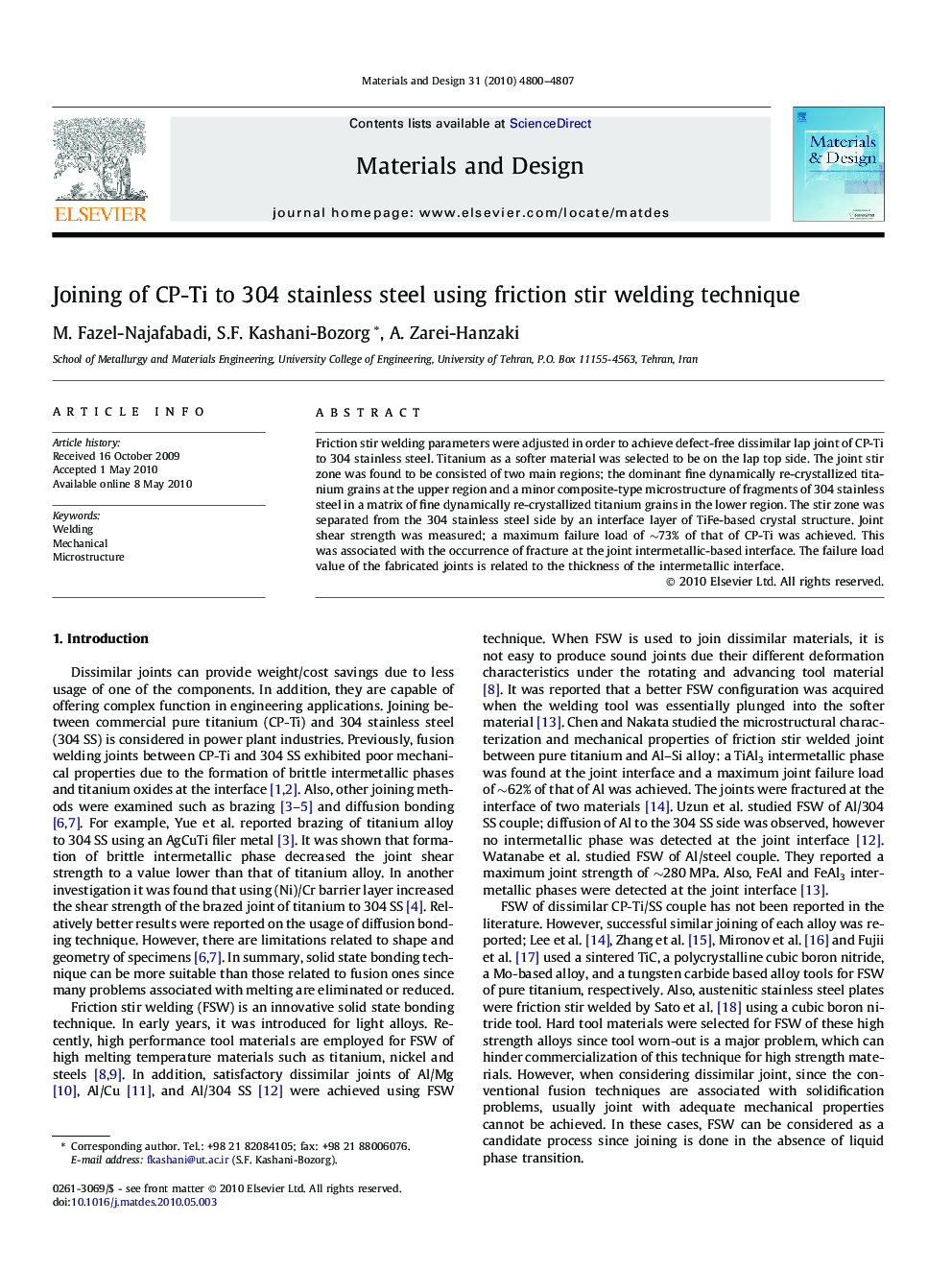| Article ID | Journal | Published Year | Pages | File Type |
|---|---|---|---|---|
| 831773 | Materials & Design (1980-2015) | 2010 | 8 Pages |
Friction stir welding parameters were adjusted in order to achieve defect-free dissimilar lap joint of CP-Ti to 304 stainless steel. Titanium as a softer material was selected to be on the lap top side. The joint stir zone was found to be consisted of two main regions; the dominant fine dynamically re-crystallized titanium grains at the upper region and a minor composite-type microstructure of fragments of 304 stainless steel in a matrix of fine dynamically re-crystallized titanium grains in the lower region. The stir zone was separated from the 304 stainless steel side by an interface layer of TiFe-based crystal structure. Joint shear strength was measured; a maximum failure load of ∼73% of that of CP-Ti was achieved. This was associated with the occurrence of fracture at the joint intermetallic-based interface. The failure load value of the fabricated joints is related to the thickness of the intermetallic interface.
